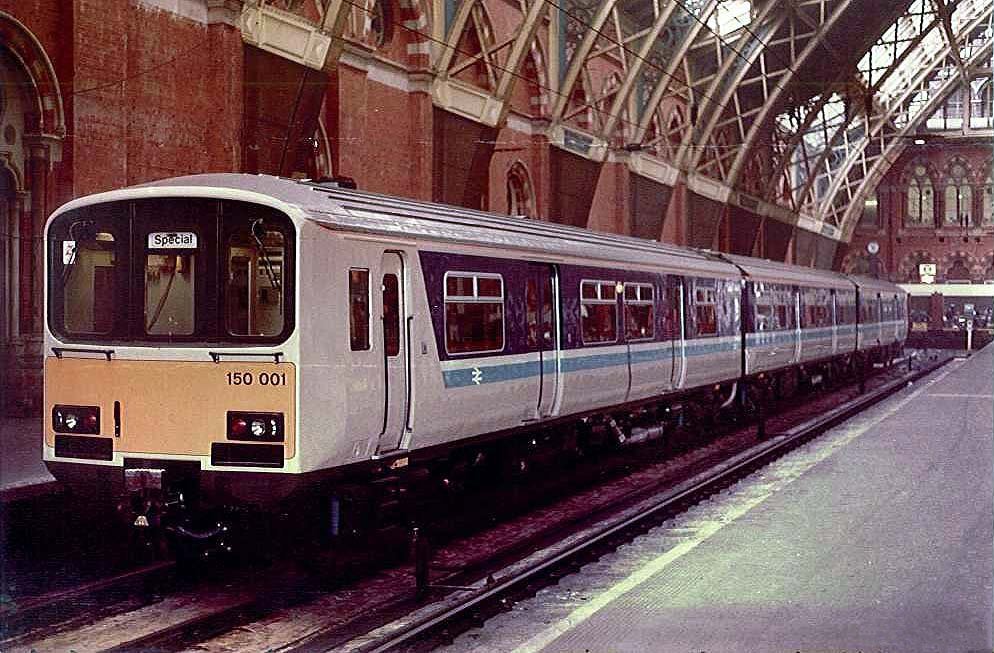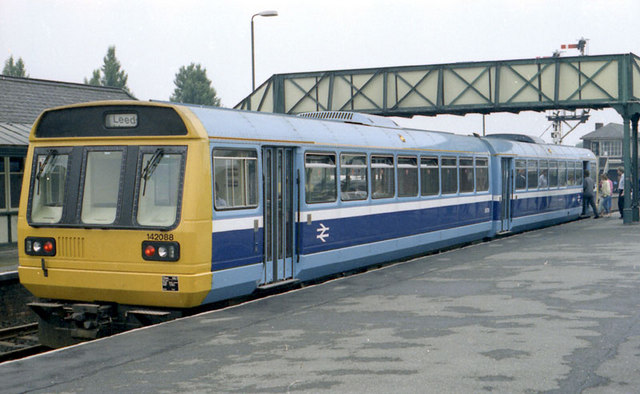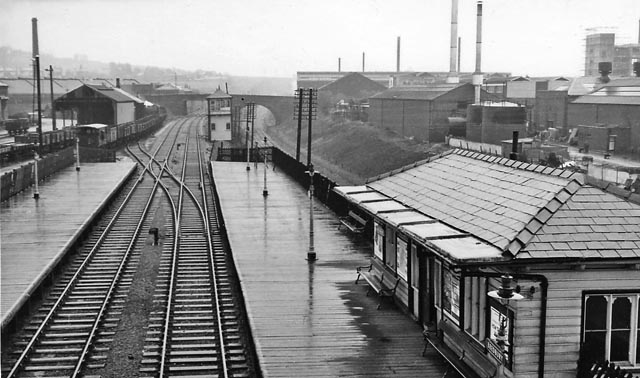|
Rose Hill Railway Station
Rose Hill Marple railway station is in Marple in the Metropolitan Borough of Stockport, England. The station, which opened in 1869, is the last surviving stop on the former Macclesfield, Bollington and Marple Railway (''MB&MR''). It is connected via a short branch to the Hope Valley Line. The original line to Macclesfield closed in January 1970, leaving Rose Hill Marple as the terminus of the route. Daily services run to Manchester Piccadilly, via the Hyde loop; there is no service on Sundays. The station provides access to the Middlewood Way, which follows the preserved route of the disused MB&MR. History The station opened on 2 August 1869. Originally named ''Marple (Rose Hill)'', it was later renamed ''Rose Hill (Marple)'', before the current form ''Rose Hill Marple'' was adopted. It was built on the Macclesfield, Bollington and Marple Railway, with dual tracks and thus two platforms. The second southbound platform (now removed, as the line is operated as a single track ... [...More Info...] [...Related Items...] OR: [Wikipedia] [Google] [Baidu] |
Marple, Greater Manchester
Marple is a town in the Metropolitan Borough of Stockport, Greater Manchester, England. It is on the River Goyt, south-east of Manchester, north of Macclesfield and south-east of Stockport. In United Kingdom Census 2011, 2011, it had a population of 23,686. Within the boundaries of the Historic counties of England, historic county of Cheshire, the town lies along the Peak Forest Canal which contains the Marple Lock Flight and Marple Aqueduct. The Roman Lakes, to the south-east of the town centre, attracts anglers and walkers. The town is served by two railway stations: Marple railway station, Marple and Rose Hill Marple railway station, Rose Hill Marple, providing access to the National Rail, rail network in Greater Manchester and beyond. It is also close to the Middlewood Way, a shared use path following the former Macclesfield, Bollington and Marple Railway line south from Rose Hill to Macclesfield. History Etymology The first reference to Marple in written history was to ... [...More Info...] [...Related Items...] OR: [Wikipedia] [Google] [Baidu] |
Greater Manchester Transport Innovation Fund (TiF)
The Greater Manchester Transport Innovation Fund was a failed bid by the Greater Manchester Passenger Transport Authority (GMPTA) and Association of Greater Manchester Authorities (AGMA) to secure £1.5 billion from the Transport Innovation Fund (TIF), a major public transport funding mechanism in England, for the metropolitan county of Greater Manchester. There would have been an additional £1.2 billion borrowed and paid back through a mixture of public transport revenues and weekday, peak-time only Greater Manchester congestion charge. If approved, the funds would have been spent on modernising Greater Manchester's transport network, with large-scale extensions of the Manchester Metrolink system, as well as increased bus and rail services, investment in existing stations and improvements to cycling and road networks. Other changes would have been the introduction of the Readycard, an Integrated Transport Smartcard similar to the Oyster card used in Greater London. AGMA ... [...More Info...] [...Related Items...] OR: [Wikipedia] [Google] [Baidu] |
Transport Innovation Fund (TIF)
The Transport Innovation Fund (TIF) was a transport funding mechanism in England, that has been replaced by the Urban Challenge Fund in March 2010. Its creation was announced by Her Majesty's Government in the July 2004 White Paper, ’The Future of Transport’. The fund had two strands for supporting different types of project: Congestion TIF where local authorities bid for funds for their own schemes; and Productivity TIF where the DfT would identify schemes of national importance. TIF represented a new approach by the Department for Transport (DfT) to allocating some of its budget for England. The fund did not apply to Scotland, Wales or Northern Ireland but they would not lose out because the budget for the fund will come from England’s overall allocation, calculated by a mechanism known as the Barnett formula. Congestion TIF schemes The DfT was looking for packages that combine demand management with a coherent anti-congestion strategy. Demand management is a euphemi ... [...More Info...] [...Related Items...] OR: [Wikipedia] [Google] [Baidu] |
British Rail Class 195
The British Rail Class 195 '' Civity'' is a class of diesel multiple-unit passenger train manufactured by CAF, owned by Eversholt Rail Group and currently operated by Northern Trains. A total of 58 units have been built; 25 two-car units and 33 three-car units. The class is almost identical to the Class 331 also produced by CAF, which is the electric version of the Class 195, differing only in traction type and (in some units) vehicle formation. They were first introduced on 1 July 2019, entering service with the previous operator Arriva Rail North on the Manchester Airport and Liverpool Lime Street via Warrington, and Manchester Airport to Barrow-in-Furness routes. The final 195 unit entered service in December 2020 and all 58 units work across all non-electrified routes across the Northern network. History The introduction of new rolling stock for the Northern franchise was fuelled by the need to phase out the unpopular '' Pacer'' trains by 2020. The tender for the then-ne ... [...More Info...] [...Related Items...] OR: [Wikipedia] [Google] [Baidu] |
British Rail Class 156
The British Rail Class 156 ''Super Sprinter'' is a diesel multiple unit passenger train. A total of 114 sets were built between 1987 and 1989 for British Rail by Metro-Cammell's Washwood Heath works. They were built to replace elderly first-generation DMUs and locomotive-hauled passenger trains. Background By the beginning of the 1980s, British Rail (BR) operated a large fleet of first generation DMUs, which had been constructed in prior decades to various designs. While formulating its long-term strategy for this sector of its operations, British Rail planners recognised that there would be considerable costs incurred by undertaking refurbishment programmes necessary for the continued use of these ageing multiple units, particularly due to the necessity of handling and removing hazardous materials such as asbestos. In light of the high costs involved in retention, planners examined the prospects for the development and introduction of a new generation of DMUs to succeed t ... [...More Info...] [...Related Items...] OR: [Wikipedia] [Google] [Baidu] |
British Rail Class 150
The British Rail Class 150 ''Sprinter'' is a class of diesel multiple unit passenger trains; they were developed and constructed by BREL York between 1984 and 1987 for use on regional services across the UK. The type is a second-generation design, built to more modern standards and based on BR's Mark 3 body design for longer-distance services. It was developed alongside the lower-cost ''Pacers'', which were built using bus parts, for use on short-distance services. Two prototype units were built, followed by 135 production units in two batches. Subsequently, further members of the Sprinter family were also developed and introduced to service, including the Class 155, Class 156, Class 158 and Class 159. Background By the beginning of the 1980s, British Rail (BR) was operating a large fleet of first-generation DMUs of various designs. While formulating its long-term strategy for this sector of its operations, BR planners recognised that there would be considerable costs ... [...More Info...] [...Related Items...] OR: [Wikipedia] [Google] [Baidu] |
Diesel Multiple Units
A diesel multiple unit or DMU is a multiple-unit train powered by on-board diesel engines. A DMU requires no separate locomotive, as the engines are incorporated into one or more of the carriages. Diesel-powered single-unit railcars are also generally classed as DMUs. Diesel-powered units may be further classified by their transmission type: diesel–mechanical DMMU, diesel–hydraulic DHMU, or diesel–electric DEMU. Design The diesel engine may be located above the frame in an engine bay or under the floor. Driving controls can be at both ends, on one end, or in a separate car. Types by transmission DMUs are usually classified by the method of transmitting motive power to their wheels. Diesel–mechanical In a diesel–mechanical multiple unit (DMMU), the rotating energy of the engine is transmitted via a gearbox and driveshaft directly to the wheels of the train, like a car. The transmissions can be shifted manually by the driver, as in the great majority of first-gener ... [...More Info...] [...Related Items...] OR: [Wikipedia] [Google] [Baidu] |
British Rail Class 142
The British Rail Class 142 Pacer were diesel multiple units built for British Rail (BR) from 1985 to 1987. The class were built with a high level of commonality with the widely-used Leyland National bus. They are part of the Pacer family of railbuses. The last set was withdrawn from service in 2020. Background By the beginning of the 1980s, British Rail (BR) operated a large fleet of first-generation DMUs, which had been constructed in prior decades to various designs. While formulating its long-term strategy for this sector of its operations, British Rail planners recognised that considerable costs would be incurred by undertaking refurbishment programmes necessary for the continued use of these ageing multiple units, particularly due to the necessity of handling and removing hazardous materials such as asbestos. In the light of the high costs involved in retention, planners examined the prospects for the development and introduction of a new generation of DMUs to succeed th ... [...More Info...] [...Related Items...] OR: [Wikipedia] [Google] [Baidu] |
Guide Bridge Railway Station
Guide Bridge railway station serves Guide Bridge in Audenshaw, Greater Manchester, England, and is operated by Northern Trains. The station is east of Manchester Piccadilly railway station, Manchester Piccadilly on both the Rose Hill Marple and Glossop Lines. History It was built by the Sheffield, Ashton-under-Lyne and Manchester Railway on its new line from Ardwick Junction, near to the Manchester and Birmingham Railway's terminus at Manchester Piccadilly railway station, Store Street station, to Sheffield; it opened as Ashton and Hooley Hill on 11 November 1841 when the line opened as far as Godley Toll Bar. It was renamed ''Ashton'' in February 1842 and became ''Guide Bridge'' on 14 July 1845, when the line was extended to Sheffield. The station had a four platform configuration originally, with a large office on the southern side. However, the southern (former slow line) platforms were decommissioned and the tracks were lifted in 1984–85; this was part of layout alte ... [...More Info...] [...Related Items...] OR: [Wikipedia] [Google] [Baidu] |
Hyde Central Railway Station
Hyde Central railway station is the main station serving Hyde, Greater Manchester, England. Originally simply ''Hyde'', it was built by the Manchester, Sheffield and Lincolnshire Railway, opening in 1858 as a branch from its main line through Penistone to Sheffield. From 1862, the branch was extended to New Mills to meet the Midland Railway's extension of its line from Millers Dale. For a while, it saw Midlands expresses from London. In 1875, however, a new more direct route was built through Bredbury. The substantial station buildings were demolished in 1980, with a new booking office at street level commissioned in their place. Hyde is also served by Hyde North, on the same line as Hyde Central, and by Flowery Field, Newton for Hyde and Godley on the electrified Manchester to Glossop/ Hadfield line. Service Hyde Central is served by a half-hourly weekday and Saturday service either way between Manchester Piccadilly and Rose Hill Marple. The frequency drops to hourly af ... [...More Info...] [...Related Items...] OR: [Wikipedia] [Google] [Baidu] |
Bredbury Railway Station
Bredbury railway station serves the town of Bredbury in the Metropolitan Borough of Stockport, Greater Manchester, England. It was built by the Sheffield and Midland Railway Companies' Committee in 1875, on the line between New Mills Central and Manchester London Road (since renamed ''Piccadilly''). The station was modernised in 1976; the buildings on the eastbound side were replaced and the platforms were raised, with the result that the old waiting room on the Manchester side is three steps lower down. The original stationmaster's house survives, as does the 1916 footbridge. Facilities The ticket office on the eastbound side is manned through the day on weekdays (06:20-20:50) and on Saturdays until early afternoon (07:20-14:20). Outside these times, ticket must be bought on the train or prior to travel. Waiting shelters are present on each platform and train running details are offered via automated announcements, digital information screens and timetable posters. No ste ... [...More Info...] [...Related Items...] OR: [Wikipedia] [Google] [Baidu] |


.jpg)






